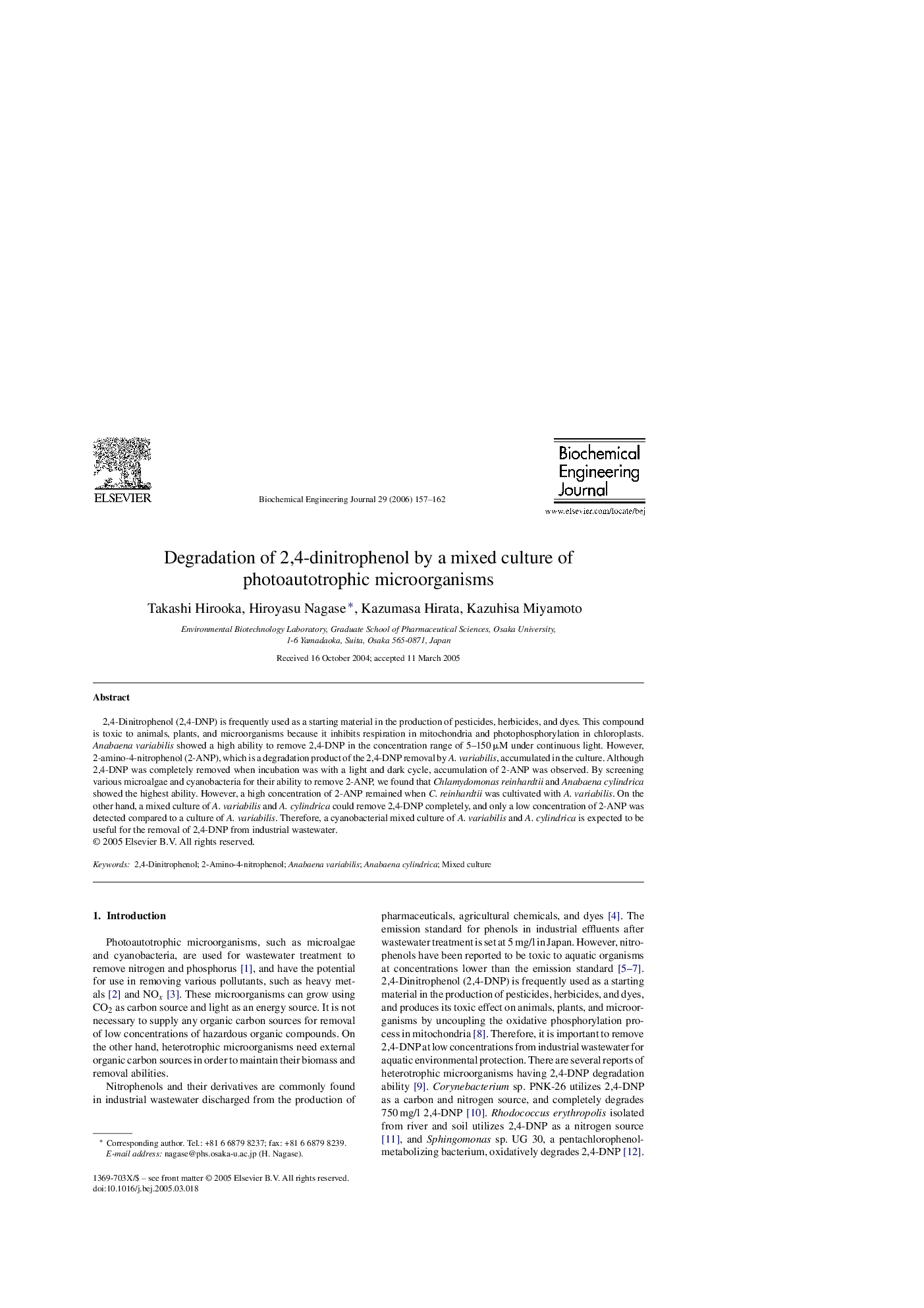| Article ID | Journal | Published Year | Pages | File Type |
|---|---|---|---|---|
| 5072 | Biochemical Engineering Journal | 2006 | 6 Pages |
2,4-Dinitrophenol (2,4-DNP) is frequently used as a starting material in the production of pesticides, herbicides, and dyes. This compound is toxic to animals, plants, and microorganisms because it inhibits respiration in mitochondria and photophosphorylation in chloroplasts. Anabaena variabilis showed a high ability to remove 2,4-DNP in the concentration range of 5–150 μM under continuous light. However, 2-amino-4-nitrophenol (2-ANP), which is a degradation product of the 2,4-DNP removal by A. variabilis, accumulated in the culture. Although 2,4-DNP was completely removed when incubation was with a light and dark cycle, accumulation of 2-ANP was observed. By screening various microalgae and cyanobacteria for their ability to remove 2-ANP, we found that Chlamydomonas reinhardtii and Anabaena cylindrica showed the highest ability. However, a high concentration of 2-ANP remained when C. reinhardtii was cultivated with A. variabilis. On the other hand, a mixed culture of A. variabilis and A. cylindrica could remove 2,4-DNP completely, and only a low concentration of 2-ANP was detected compared to a culture of A. variabilis. Therefore, a cyanobacterial mixed culture of A. variabilis and A. cylindrica is expected to be useful for the removal of 2,4-DNP from industrial wastewater.
